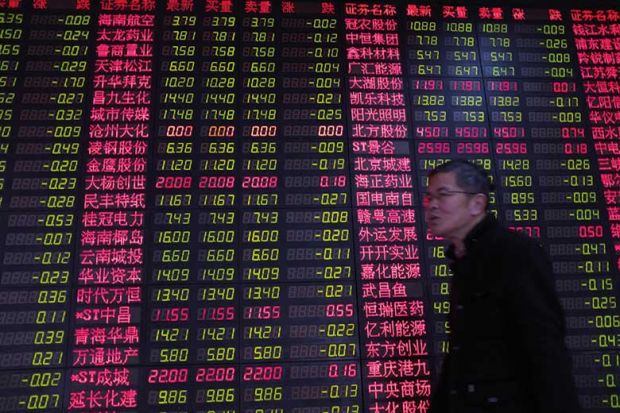The ascent of China is the defining economic development of our times. In less than four decades an impoverished, isolated country has become the top producer of consumer goods, the main trade partner for most countries and the second-largest economy in the world. In The People’s Money, Paola Subacchi tackles a paradox at the centre of China’s astonishing transformation. The economic heavyweight has a “dwarf” currency – the renminbi is of little significance and use beyond China’s borders.
Ironically, the country that invented government-backed paper money more than half a millennium before it appeared in the West overwhelmingly relies on the US dollar – the symbol of Western capitalism – to price and exchange exports and imports and to store its wealth. This has major costs. China’s excessive dollar reserves divert funds from productive use and leave the nation’s wealth vulnerable to the economic policies of the country’s ideological opponent. Chinese firms face considerable costs and risks when trading abroad, while the country’s savers have limited investment opportunities.
Subacchi offers an insightful look at China’s economic development over the past half century and the central role played by the “people’s currency”. Despite their disadvantages, the renminbi’s weakness and restricted international use were deliberate and critical to China’s rise. They were a core part of a strategy to boost trade and investment that produced phenomenal growth, albeit at the cost of financial repression condemning households to save at artificially low interest rates. Subacchi shows how, with its inefficient use of capital and the build-up of economic imbalances, this model of development became unsustainable and needed to change.
Her study breaks new ground in discussing China’s recent policy shift to develop the renminbi into an international currency. Subacchi skilfully navigates through the complexities of the unconventional reforms aimed at promoting the renminbi’s international use without allowing free capital flows across the border and sacrificing control of the foreign exchange and interest rates. The People’s Money offers a rich, accessible and much needed account of the workings of China’s opaque banking and financial systems, in which restrictions and quotas coexist with the invisible hand of the market. It is filled with interesting evidence, including off-the-record conversations with Chinese officials, bankers and economists.
China’s efforts have substantially increased the renminbi’s use as a means of exchange in international trade, particularly in Asia. However, the currency’s role in international finance, as a store of value, remains limited. Subacchi rightly argues that it is institutional deficiencies that constrain the renminbi’s international use. Yet while she convincingly lays out the measures required to create a global currency and points to the conflicting policy objectives of the Chinese authorities, she rather underplays the fundamental tensions between the necessary reforms and China’s political regime.
Money is simply a promise that we trust. In order to hold renminbi-denominated assets, foreigners need confidence in China’s institutions and policies, which ultimately determine the currency’s purchasing power. Can this be achieved by an authoritarian state with limited transparency and accountability, vested interests and a deep-seated belief in central planning and control? Will the renminbi succeed in becoming a truly global rather than just a regional currency? Subacchi leaves these questions open. Only time will tell.
Anna Watson is fellow and director of studies in economics, Fitzwilliam College, Cambridge.
The People’s Money: How China is Building a Global Currency
By Paola Subacchi
Columbia University Press, 256pp, £26.00
ISBN 9780231173469
Published 22 November 2016
POSTSCRIPT:
Print headline: A dwarf dreams of being a giant
Register to continue
Why register?
- Registration is free and only takes a moment
- Once registered, you can read 3 articles a month
- Sign up for our newsletter
Subscribe
Or subscribe for unlimited access to:
- Unlimited access to news, views, insights & reviews
- Digital editions
- Digital access to THE’s university and college rankings analysis
Already registered or a current subscriber? Login




